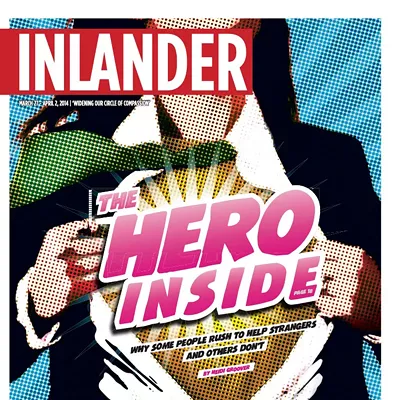In a big yellow house on the South Hill, the table in Tonilee Hanson’s office is full of neatly stacked pamphlets, maps and kids’ comic books. Hanson is unassuming, soft-spoken and well-organized, but she sees herself as a warrior in the battle to protect the aquifer under her feet, and these are her weapons.
The Spokane Valley-Rathdrum Prairie Aquifer provides drinking water for more than 500,000 people in North Idaho and Eastern Washington. And while it’s a clean, fresh, abundant source, officials and advocates like Hanson work to protect it from the most harmful polluters, everyday cleaning supplies and everything in between.
From dumping chemicals or oil into storm drains to using the wrong kind of fertilizer on a backyard lawn, potential for contamination is widespread. Designated as a “sole source aquifer” by the Environmental Protection Agency — meaning it’s the only or primary drinking water source for the area — the aquifer has gotten increased protections from companies with high chances of contaminating the aquifer. State and national agencies regulate big companies that use a lot of potentially hazardous materials, and local advocates say they’re confident in that oversight. Now they’re working to expand awareness and regulation to small businesses and individuals.
These educational materials are reaching more people who may not think about their impact on the aquifer, Hanson says. The Spokane Aquifer Joint Board, made up of water providers from Millwood to North Spokane, tracks regional potential contaminators and works on public outreach to educate people and businesses about the best ways to store and dispose of potentially hazardous waste. Their EnviroStars program recognizes businesses that voluntarily comply with a set of practices to help safeguard hazardous waste, and encourages people to support those businesses.
“We have some of the best drinking water. We’re very lucky,” says Hanson, program manager of the board. But she’s determined to stay vigilant.
At the Spokane Regional Health District, Sandy Phillips spends her days working toward the same goal. She’s out looking for small businesses that handle potentially dangerous materials — from oil and antifreeze to pet medications — but not in quantities large enough to get them scheduled checks from the EPA or state Department of Ecology.
When she finds them, she offers a voluntary checkup on how they’re doing in their efforts to keep their toxic materials from leaching into the ground to the aquifer or running into storm drains, where they could end up in the Spokane River or groundwater. It’s easy to dismiss river pollution from concerns about what’s reaching your tap, officials say, but the river and aquifer intersect and share water at various points along the river’s winding route. While small in comparison to the whole aquifer, those interchanges make both bodies of water vulnerable to the other’s contaminants.
Phillips’ work is focused on areas of town identified as having the highest contamination levels, especially along Trent and East Sprague. She hones in on businesses like mechanics, dry cleaners, veterinarians and printers, looking to ensure they’re keeping dangerous substances from ending up in the river or aquifer.
“Most businesses want to do the right thing,” she says. “Sometimes there are things they’re not aware of.”
Automotive-related shops are high-risk because materials like oil and antifreeze can spill or seep into parking lot storm drains. Other businesses have their own variety of potentially dangerous goods: certain soaps, medications and ink. One of the most common culprits: car washing. Phillips and Hanson warn people against washing cars in the street where drains don’t have the oil-water separators most automotive shops do. Without proper steps, the oil, grime and soap residue can end up in the river or the aquifer.
Across the state line in Kootenai County, Dick Martindale manages the environmental health department of Panhandle Health District, an agency that’s worked to protect the aquifer since the 1970s.
Much of his work is similar to Phillips’, but he’s got a bit more weight. While Idaho may traditionally be the less regulated frontier of the two states, its regulations surrounding aquifer protection are more stringent than Washington’s. Where programs like EnviroStars and Phillips’ checklist are voluntary, all businesses in Idaho are required to be inspected by Martindale’s team every other year. The health district has a rule limiting on-site sewage disposal to one house per five acres, limiting the chances sewer systems could leak waste into groundwater. And in 2006, county voters approved a special fee on those who own property above the aquifer. It’s minimal — only $12 to $24 a year — but it’s paying for education, enforcement and water quality testing.
Martindale calls that vote a “huge shining light” on how much people value their water source.
“Well over 20 years ago there was the need for serious education. Today, people really understand what the aquifer is and why it’s so critical to our economy and health,” he says. “[But] the No. 1 thing is you’ve got to have boots on the ground. You’ve got to have the authority in the rare instance you get pushback.”

















